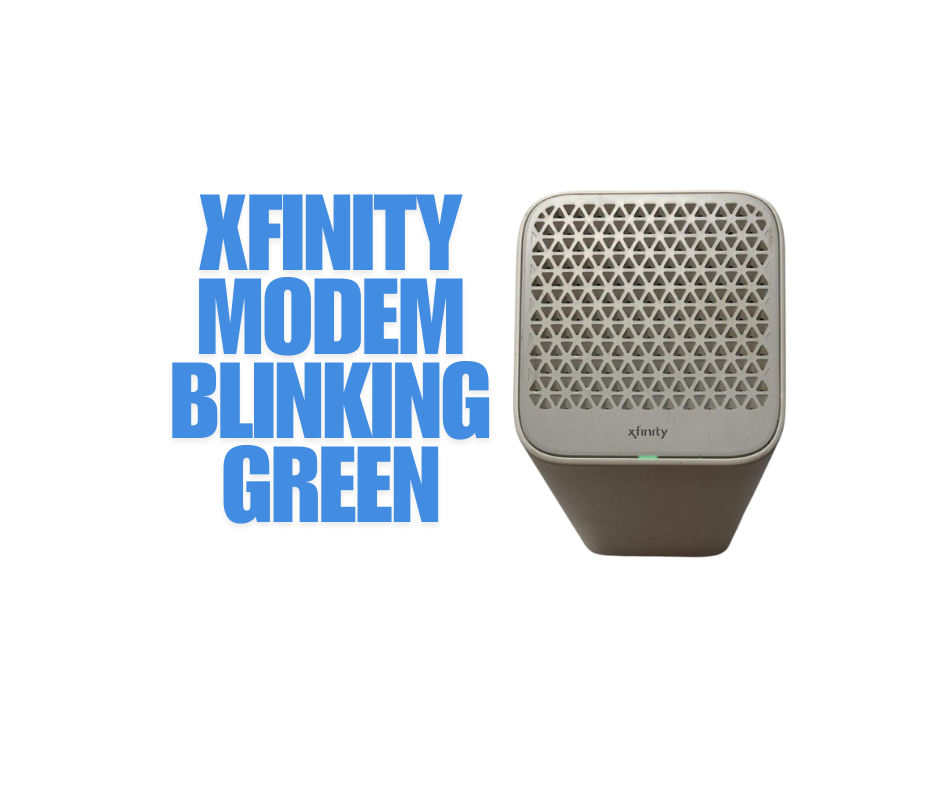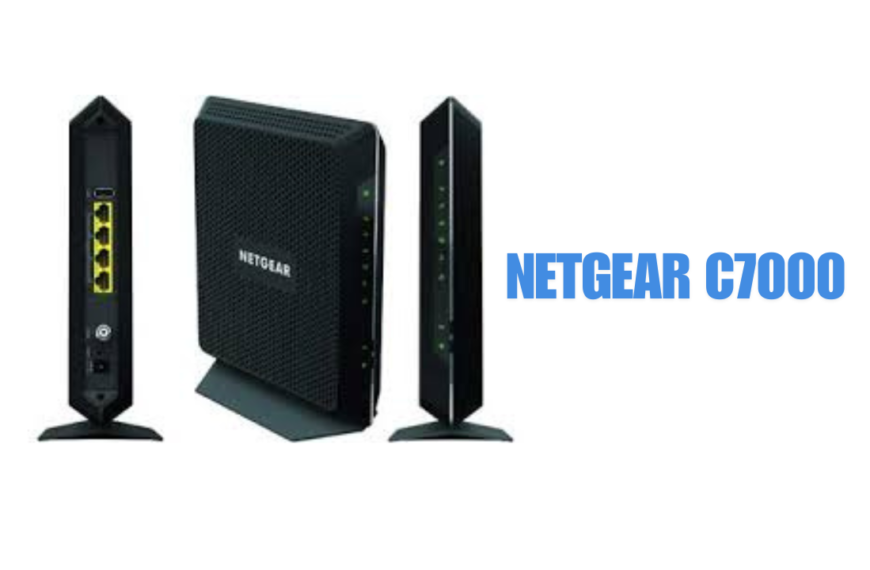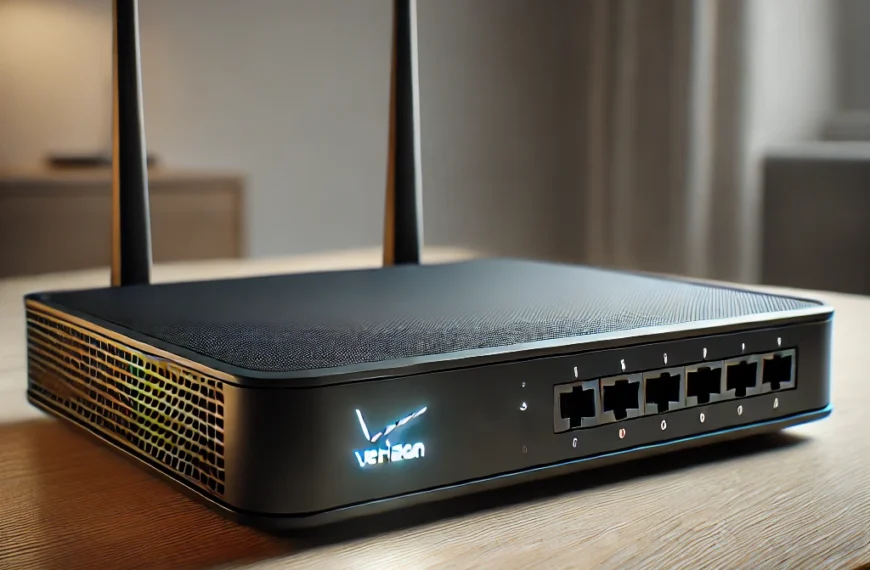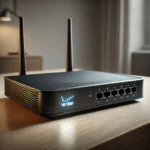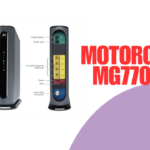The blinking green light on your Xfinity modem can be a cause for concern, especially when you rely on your internet connection for work, entertainment, or staying connected. This blinking light typically signals an issue with the modem’s connectivity, indicating that it is struggling to establish or maintain a stable connection to the internet. While the green light might not always mean a severe problem, leaving it unaddressed can lead to disruptions in your online activities.
Understanding and resolving this issue is crucial for ensuring uninterrupted access to your internet services. Whether the problem stems from a minor cable connection issue, a service outage, or something more complex, knowing how to troubleshoot can save time and frustration. Additionally, identifying the root cause helps you take preventative measures to avoid similar problems in the future.
In this article, we’ll delve into the meaning behind the blinking green light and explore its most common causes. You’ll also learn step-by-step troubleshooting techniques, from simple fixes like checking your cable connections to more advanced solutions such as resetting the modem or contacting Xfinity support. Finally, we’ll share practical tips for maintaining your modem and preventing recurring issues.
What Does the Blinking Green Light on an Xfinity Modem Indicate?
The blinking green light on an Xfinity modem is a communication signal indicating that the device is attempting to establish a connection. While the light’s activity may vary depending on the model, a blinking green light often means the modem is struggling to sync with your internet service provider (ISP) or encountering an interruption in connectivity.
Common Causes of the Blinking Green Light
- Network Connectivity Issues
- The modem may have trouble establishing a stable link to Xfinity’s servers due to network instability or interference.
- Cable or Connection Problems
- Loose, damaged, or improperly connected cables can disrupt the signal. Coaxial cables, Ethernet cords, or power supply issues are common culprits.
- Service Disruptions from Xfinity
- Outages or maintenance work by Xfinity can prevent your modem from connecting, causing the green light to blink.
- Firmware or Software Malfunctions
- Outdated firmware or software glitches in the modem may hinder its ability to communicate with the network properly.
- Overloaded Network
- Excessive devices or high data usage on the network can lead to intermittent connectivity, making the modem repeatedly try to reconnect.
Differentiating the Blinking Green Light from Other Light Signals
Xfinity modems are equipped with various indicator lights, each representing a specific status. For instance:
- Solid Green Light: A steady green light usually indicates a stable and active connection.
- Blinking Green Light: Signals an attempt to establish a connection, pointing to potential issues with syncing or network stability.
- Solid Red Light: Indicates a critical issue, such as no service availability.
- Flashing Amber/Orange Light: Often suggests firmware updates or a partial connection to the network.
Understanding these distinctions can help you identify whether the blinking green light requires immediate attention or if it’s part of a routine process, such as a reboot or brief service interruption. Recognizing this pattern is the first step toward diagnosing the issue effectively.
Common Causes of a Blinking Green Light
The blinking green light on your Xfinity modem is often a warning sign that something is disrupting its ability to connect to the internet. Several potential causes could be behind this issue, ranging from simple connection problems to more complex service or hardware malfunctions.
1. Network Connectivity Issues
A disruption in the internet signal is one of the most common reasons for a blinking green light. This occurs when the modem struggles to establish or maintain a stable link with Xfinity’s network. Causes can include network interference, excessive traffic in your area, or problems with the modem’s internal components responsible for signal processing.
2. Hardware or Software Problems
- Modem Malfunction: Over time, modems can develop faults that impact their performance, such as overheating or wear and tear of internal components.
- Outdated Firmware: Modems require updated firmware to function optimally. If the firmware is out-of-date or becomes corrupted, it can interfere with the device’s ability to connect.
3. Cable or Connection Problems
The physical connections between your modem and other components in your setup play a crucial role in maintaining internet stability.
- Loose Connections: Coaxial or Ethernet cables that are not securely attached can result in an unstable signal.
- Damaged Cables: Worn-out or frayed cables, including the power cord, can disrupt connectivity.
- Splitter Issues: If you’re using a splitter for your cable line, it can degrade the signal quality, especially if it’s faulty or low quality.
4. ISP Service Disruptions
Outages or maintenance work by Xfinity can leave your modem in a state where it continuously tries to reconnect. These service disruptions are usually temporary and are often communicated through Xfinity’s support channels. However, during this time, your modem’s green light may blink to indicate its inability to connect.
Step-by-Step Troubleshooting Guide
If your Xfinity modem is blinking green, following a systematic troubleshooting process can help resolve the issue efficiently. Here’s a step-by-step guide to get your internet connection back on track:
Step 1: Check the Cable Connections
Loose or damaged cables are one of the most common causes of connectivity issues.
- Ensure All Cables Are Securely Connected: Inspect the coaxial cable connecting the modem to the wall outlet, as well as the Ethernet cable (if used) connecting the modem to other devices. Ensure they are securely plugged in and not loose.
- Inspect for Damaged or Frayed Wires: Look for visible damage on the cables, such as cuts, frays, or bends. Damaged cables can interrupt the signal, and replacing them might be necessary.
Step 2: Restart Your Modem
Power cycling the modem is often a simple but effective fix.
- How to Restart: Unplug the modem from its power source. Wait about 30 seconds to allow the modem’s memory to clear, then plug it back in. Wait for the modem to reboot fully, which typically takes a few minutes.
- Benefits of Restarting: This process refreshes the modem’s connection to the network, clears minor glitches, and can resolve temporary communication errors with your ISP.
Step 3: Check for Service Outages
If your modem is still blinking green, the issue might not be with your equipment but rather with Xfinity’s network.
- Verify Service Status: Visit the Xfinity website or use the Xfinity app to check for reported outages in your area.
- Alternatives If Xfinity’s Website or App Is Inaccessible: Call Xfinity’s customer service or check local forums or social media for outage reports.
Step 4: Update Modem Firmware
Outdated firmware can prevent the modem from functioning correctly.
- Importance of Keeping Firmware Up to Date: Firmware updates often fix bugs, enhance security, and improve device performance.
- Instructions for Updating Firmware:
- Log in to the modem’s admin panel using its IP address (typically printed on the device or available in the user manual).
- Check for a firmware update option in the settings.
- Follow the on-screen instructions to update the firmware. Note: Some Xfinity modems update firmware automatically, but you can contact Xfinity support if you’re unsure.
Step 5: Reset the Modem to Factory Settings
If all else fails, a factory reset might be necessary to resolve deeper issues.
- When and How to Perform a Factory Reset:
- Locate the reset button on the back of the modem.
- Press and hold the button for 10-30 seconds (refer to the modem’s manual for specifics) until the lights on the modem flash, indicating it’s resetting.
- Once reset, the modem will restart and return to its default settings.
- Precautions to Take Before Resetting: Keep in mind that a factory reset erases any personalized settings, including Wi-Fi passwords, network names, and custom configurations. Ensure you have this information handy to reconfigure the modem afterward.
By following these steps methodically, you can address most causes of a blinking green light on your Xfinity modem. If the issue persists, it may be time to contact Xfinity support for further assistance.
When to Contact Xfinity Support
While many connectivity issues can be resolved through troubleshooting, certain signs indicate the need for professional assistance from Xfinity support.
Signs the Issue Requires Professional Assistance
- Persistent Blinking Green Light: If the light continues to blink despite following all troubleshooting steps, it may point to a deeper issue, such as hardware failure or a network configuration problem.
- No Improvement After a Factory Reset: If resetting the modem to factory settings does not restore connectivity, the issue might be beyond your control.
- Frequent Connectivity Drops: Repeated interruptions in your internet service suggest an underlying problem with the modem, cables, or the ISP’s infrastructure.
- Error Messages: If your modem displays error codes or unusual behavior, these should be reported to Xfinity support.
- Suspected Account or Service Issues: Problems like unpaid bills, service plan limitations, or account misconfigurations may require intervention from Xfinity.
What Information to Have Ready When Contacting Support
To expedite the resolution process, have the following information prepared:
- Account Details: Your Xfinity account number or associated email address.
- Modem Model: The model and serial number of your Xfinity modem, usually found on a label on the device.
- Issue Description: A detailed summary of the problem, including when it started and any steps you’ve already taken to troubleshoot.
- Service Status: Mention whether you’ve checked for outages or maintenance in your area.
- Error Codes: Provide any error codes or messages displayed on the modem or in the Xfinity app.
Preventing Future Issues with Your Xfinity Modem
Taking proactive steps can help minimize connectivity issues and ensure your modem operates smoothly over time.
Regular Maintenance Tips
- Restart Periodically: Power cycle your modem every few weeks to refresh its system and prevent minor glitches.
- Keep Firmware Updated: Ensure the modem’s firmware is up to date by checking with Xfinity or enabling automatic updates if available.
- Inspect Cables: Regularly check cables for wear and tear, and replace any that show signs of damage.
Ensuring Optimal Modem Placement and Setup
- Position Strategically: Place the modem in a central location, elevated, and away from walls or obstructions to maximize signal strength.
- Avoid Interference: Keep the modem away from electronic devices or appliances that could interfere with the signal, such as cordless phones or microwaves.
- Use Quality Splitters: If a splitter is necessary for your setup, ensure it is high-quality to avoid degrading the signal.
Benefits of Using a Surge Protector
- Protect Against Power Surges: Plugging your modem into a surge protector safeguards it from sudden voltage spikes, which can damage internal components.
- Enhance Longevity: Consistent protection against electrical issues helps maintain the modem’s performance and extends its lifespan.
By implementing these preventative measures, you can significantly reduce the likelihood of experiencing connectivity issues with your Xfinity modem. Staying vigilant about maintenance and placement ensures a stable and reliable internet connection for the long term.
read more: why is my xfinity router blinking orange
Conclusion
A blinking green light on your Xfinity modem can be a frustrating experience, but understanding its causes and knowing how to troubleshoot effectively can save you time and stress. Whether the issue stems from network connectivity problems, cable malfunctions, or ISP disruptions, addressing the root cause systematically is key to restoring your internet connection.
This article has provided a comprehensive guide to diagnosing and fixing the problem, from checking cables and restarting the modem to updating firmware and performing a factory reset. Additionally, knowing when to seek professional assistance from Xfinity support ensures that more complex issues are handled promptly and efficiently.
To prevent future connectivity disruptions, adopt proactive habits like regular modem maintenance, strategic placement, and the use of surge protectors. These measures not only enhance your modem’s performance but also help ensure a seamless internet experience for your household or business.

